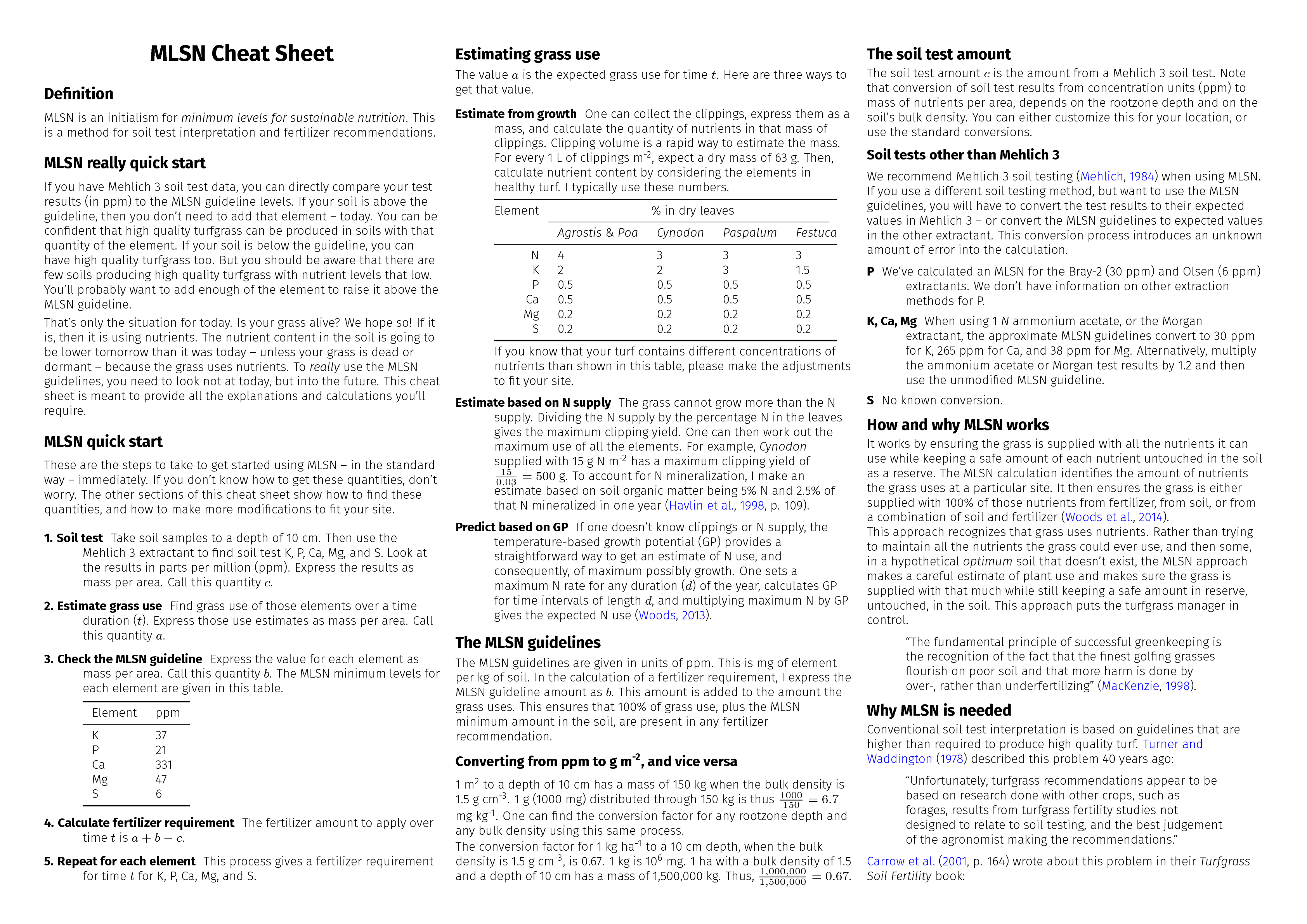This is an excellent question:
“I attended your presentation at the [omitted] conference and had a question regarding MLSN. In the equation a + b - c = Q it’s the “a” part of the equation I am having trouble with figuring out how to arrive at that number. Could you point me to one of your presentations or articles that explains that in detail. Sorry I didn’t grasp that in the talk but I am getting up there in years so it takes us old guys a bit longer for thing to sink in. I really want to give this a shot.”
I should mention that this is not the first time I’ve been asked this same question, so I have to consider how effectively I’ve been teaching this particular point. I think there is something else to it also – we typically haven’t thought of how much the grass is using. As an aside, that probably has something to do with the amounts of some nutrients being applied in quantities so out of proportion to what the grass can use.
Now to answer the question.
First, please have a look at the MLSN cheat sheet. I wrote it just for this type of question.
Assuming you don’t measure the nutrient use, an easy way to get a maximum estimate of use is by looking at N supply. Grass can’t grow more than the quantity of N supplied. Also, the N uptake is not 100% efficient. So looking at N supply will be a maximum use.
Let’s say you apply 2 pounds of N per 1000 square feet in the next 5 months. And let’s say healthy grass of that species has 4% N in the leaves – we’ll work with numbers for a typical cool-season grass. And the soil mineralization of N is expected to be 0.4 pounds. N supply then is 2.4 pounds, and the maximum growth of the grass is 2.4 divided by 4%, or 0.04. Thus, the maximum clipping yield in that situation is 60 pounds per 1000 square feet. And if it is unhealthy turf? It will use less. So our estimate is still the maximum we could possibly need.
Now we multiply the total clipping yield by the percentage of each element in the leaves. In 60 pounds of clippings from healthy grass, you can expect to find:
- 2.4 pounds of N
- 1.2 pounds of K
- 0.3 pounds of P
- 0.3 pounds of Ca
- 0.12 pounds of Mg
- 0.12 pounds of S
- less that 0.006 lbs of each of the micronutrients (this is why I don’t worry about micronutrients)
